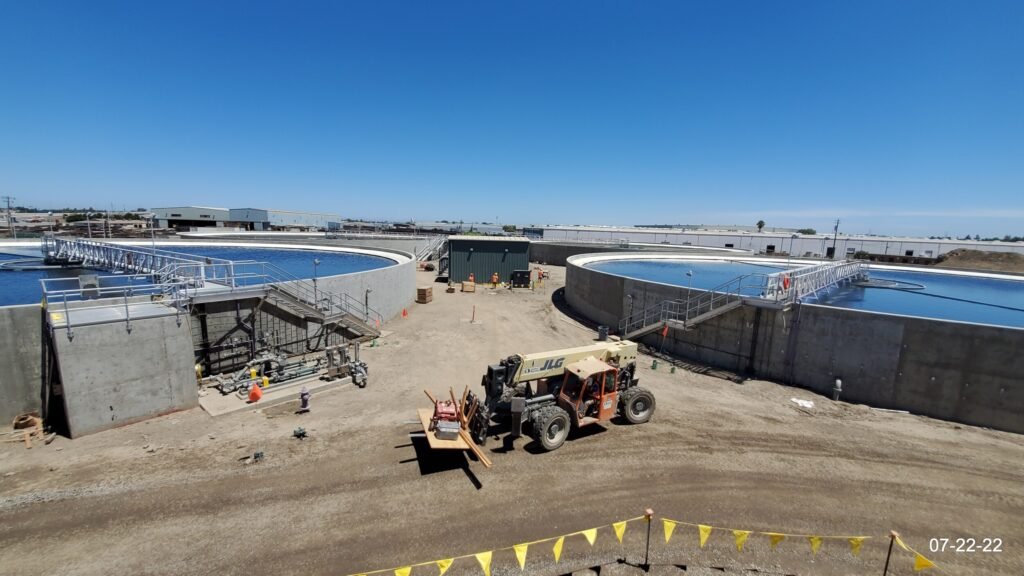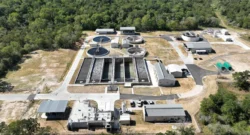Stockton Regional Wastewater Control Facility

Stockton Regional Wastewater Control Facility: A Detailed Insight
Situated in the heart of California’s San Joaquin Valley, the Stockton Regional Wastewater Control Facility (SRCWF) is a pivotal infrastructure component for the City of Stockton and its surrounding communities. As Stockton continues to grow and evolve, ensuring the efficient processing of its wastewater is vital to maintaining public health, supporting economic growth, and protecting the environment. This article delves into the SRCWF, focusing on its operational scope, recent developments, community involvement, and key projects.
Population Served
The SRCWF serves a significant portion of San Joaquin County, primarily focusing on the City of Stockton. With a population of approximately 320,000 residents, Stockton is the largest city in the county and one of the major urban centers in California’s Central Valley. The Facility’s service area is not limited to residential zones but also includes various commercial and industrial sectors, adding to the complexity and volume of wastewater managed.
Wastewater Volume and Treatment Capacity
The wastewater processed by SRCWF comes from a variety of sources, including homes, businesses, schools, and industries. Stockton generates an average daily wastewater volume of about 30 million gallons. However, this figure can vary significantly due to seasonal changes, population growth, and industrial activities.
The treatment plant has the capacity to handle a peak flow of approximately 55 million gallons per day (MGD), showcasing its ability to manage surges that can occur during heavy rainfall or industrial discharges. This robust capacity ensures that the SRCWF remains reliable and effective even during sudden increases in wastewater volume.
Treatment Process
-
- Preliminary Treatment: The first step involves screening and grit removal to eliminate large debris and inorganic materials which could damage downstream equipment.
-
- Primary Treatment: This involves sedimentation tanks where solids settle and are subsequently removed, reducing suspended solids and organic load.
-
- Secondary Treatment: The biologically active portion of the treatment process where microorganisms break down organic matter. Aeration basins and secondary clarifiers play critical roles in this stage.
-
- Tertiary Treatment: Advanced filtration and disinfection processes ensure that the treated effluent meets stringent state and federal water quality standards before being released into local water bodies. Technologies like ultraviolet (UV) disinfection and, in some cases, chemical treatments are employed to destroy pathogens.
-
- Sludge Management: The residual sludge undergoes thickening, digestion, and dewatering. The resultant biosolids are either recycled for agricultural use or disposed of in a manner that complies with environmental regulations.
Recent Local News and Developments
In recent years, the SRCWF has been in the spotlight due to several upgrades and modernization initiatives aimed at enhancing its efficiency and sustainability. One of the significant local news stories was the Facility’s multi-million dollar upgrade project, initiated in response to both regulatory requirements and community needs.
Major Upgrade Project
The upgrade project includes:
-
- Enhanced Nutrient Removal: To meet the stricter discharge limits for nutrients like nitrogen and phosphorus, the facility has implemented advanced biological nutrient removal (BNR) systems. This not only helps in compliance but also aids in reducing the eutrophication in receiving waters.
-
- Energy Efficiency Improvements: Installation of energy-efficient blowers and the optimization of aeration processes have significantly reduced the plant’s energy consumption. Solar panels have also been installed to offset a portion of the facility’s electrical demand.
-
- Odor Control: New odor control systems have been activated to minimize the impact of the facility on the surrounding communities. This includes the use of scrubbers and biofilters.
Key Projects
-
- Tertiary Treatment Expansion:
-
- The expansion of the tertiary treatment facilities has been one of the focal points of recent projects. This includes the enhancement of filtration and disinfection processes to ensure higher quality effluent.
-
- Tertiary Treatment Expansion:
-
- Resource Recovery:
-
- SRCWF is actively exploring resource recovery options, such as the capture of biogas from anaerobic digestion processes. This biogas is then used to generate electricity and heat, further reducing the facility’s carbon footprint.
-
- Resource Recovery:
-
- SCADA System Upgrade:
-
- The Supervisory Control and Data Acquisition (SCADA) system, which is pivotal for monitoring and controlling the treatment process, has received a significant upgrade to improve operational efficiency and data analytics capabilities.
-
- SCADA System Upgrade:
-
- Recycled Water Program:
-
- This initiative aims to treat wastewater to a higher standard for non-potable reuse in irrigation, industrial processes, and potentially even groundwater recharge. This not only conserves potable water but also supports sustainability efforts.
-
- Recycled Water Program:
Community Engagement
The involvement of the community is integral to the success of SRCWF. The facility has undertaken numerous initiatives to foster transparency, education, and collaboration with the residents it serves.
Public Education Campaigns
Educational programs and workshops have been organized to inform the public about the importance of wastewater treatment and the role they can play in maintaining the facility’s efficiency. School tours and community open days offer residents a firsthand look at the treatment process.
Feedback Mechanisms
Active feedback mechanisms such as surveys, public forums, and town hall meetings are employed to gather input from community members regarding facility operations and proposed projects. This participatory approach ensures that the facility’s developments align with public interest and environmental stewardship goals.
Environmental Stewardship Programs
SRCWF collaborates with local environmental groups and organizations to promote sustainable practices. Initiatives like the Adopt-A-Stream program engage community volunteers in monitoring and cleaning up local waterways, enhancing the ecological health of the region.
Conclusion
The Stockton Regional Wastewater Control Facility stands as a testament to the city’s commitment to sustainability, public health, and environmental protection. With its advanced treatment processes, capacity to handle substantial wastewater volumes, and proactive community engagement efforts, SRCWF is a cornerstone of Stockton’s infrastructure. As the community continues to grow, the facility’s ongoing upgrades and projects will ensure it meets the evolving needs of the population, safeguarding water quality for future generations.
By investing in modern technology and fostering a collaborative relationship with the community, the SRCWF not only addresses present-day challenges but also sets a robust framework for the sustainable management of wastewater in the years to come.


